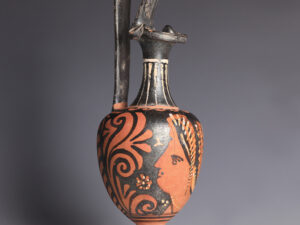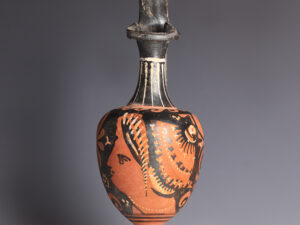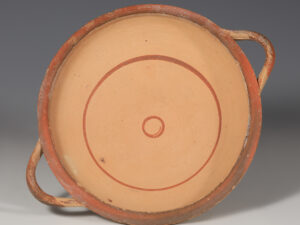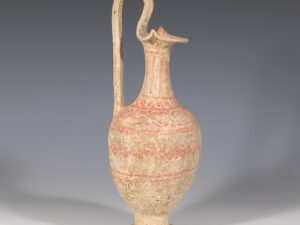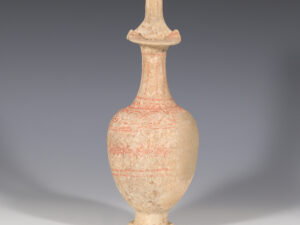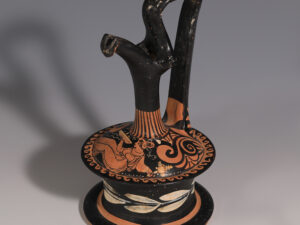The Daunians were an Italic tribe inhabiting northern Apulia in classical antiquity, speaking the Messapian language and with a distinctive archaeological culture to their neighbours in the south, the Peucetians and the Messapians. They first came into contact with the Greeks during the latter’s expansion in Southern Italy in the 8th century BC. The creation of Roman settlements in Southern Italy in the 4th century BC had a great Latinising effect on the area, and by the 3rd century BC, the Daunians had become part of the Roman Republic. Prior to this, a local ceramic production had been developed in the region, starting in the Late Bronze Age (11th century BC) and independent of the development of the first Greek and Roman ceramics. Daunian pottery is characterised by a light coloured purified clay and decorations with simple geometric patterns in red, brown or black earth coloured pigments. This production continued uninterrupted until the Hellenistic age, showing unique characteristics according to the different areas of the region.
Daunian Terracotta Krater
$1,079.36
An elegant terracotta krater originating from the Daunian culture of Northern Apulia. The vessel features a bell shaped body sat upon a pedestal circular foot. The shoulders pinch in slightly before flaring out into an everted rim. A looped handle has been applied to either side on the shoulder. A frieze of ivy leaf vines runs horizontal around the shoulder of the krater, framed by thin concentric bands. The lower register, the handles, and foot of the krater have been rendered in a block colour. At the neck, the vessel has been further embellished by a thick painted band, with the rim also displaying two concentric bands, one thick and one thin. All the decorations are painted with reddish-brown pigment varying in different hues due to age, with one side presenting a striking red colour and the other a deep brown that is almost black.
Out of stock
Additional information
| Weight | 1782.2 g |
|---|---|
| Dimensions | 25 × 22.3 × 27.3 cm |
| Culture | Ancient Greek |
| Region | Southern Europe |
| Pottery porcelain | Terracotta |
| Pottery and Porcelain | Terracotta |



















